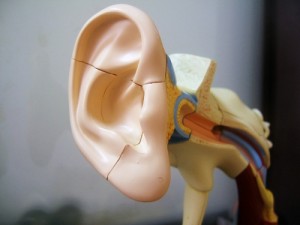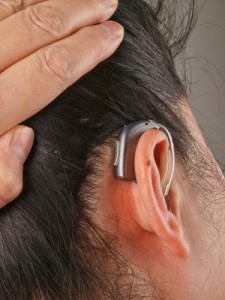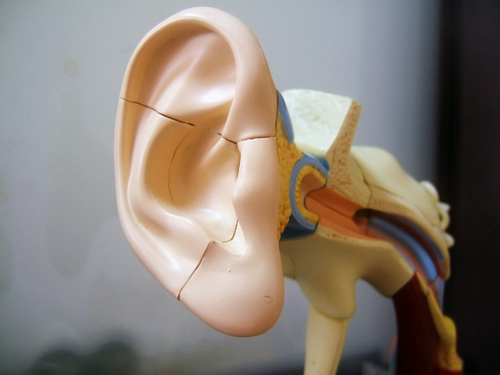(advertisement)
 Technology has been moving on at a rapid pace. Wireless technology is allowing is allowing is to stay in touch with friends and family wherever we are. We can access the internet and watch television programs and listen to music anywhere. Not only are wireless devices becoming a part of everyday life they are also getting smaller, and new ways of benefiting from this are being found all the time.
Technology has been moving on at a rapid pace. Wireless technology is allowing is allowing is to stay in touch with friends and family wherever we are. We can access the internet and watch television programs and listen to music anywhere. Not only are wireless devices becoming a part of everyday life they are also getting smaller, and new ways of benefiting from this are being found all the time.
Wireless and digital technology is being used in hearing aids to improve sound quality and make life easier for hearing aid users. If you wear two hearing aids, changing the volume or program can be awkward or fiddly as you have to alter them individually. Wireless hearing aids are able to ‘talk’ to each other so if you change the volume on one, the other changes automatically.(1) Remote controls are also available for wireless hearing aids which allow you to change the volume or programme discretely, without anyone giving you funny looks or asking you what you are doing. (2) Certain hearing aids can also be altered using a special app on your mobile phone.
One of the problems hearing aid users can face is being unable to use a telephone which isn’t hearing aid compatible. This includes many mobile phones. Telephones are available which are fitted with t-coils or an extra loud speaker volume, however making calls when you are out of the house can still be a problem. Wireless Bluetooth technology fitted in a hearing aid can allow you to receive a hands free telephone call on your smart phone, by wirelessly transmitting the sound to both of your hearing aids.(3)
This system can also let you listen to music on your phone or MP3 player without having to take out your hearing aids and wear headphones. This is ideal if you like to listen to music whilst you are out and about as if you want to listen to others around you can simply turn the music down.
(advertisement)
If you have a television with wireless capability you will be able to stream the sound directly to your hearing aids, allowing others in the room to listen to the TV at a comfortable volume for them. Many theatres and lecture halls now have wireless connectivity (4) which allows you to follow the person speaking, and this will give you a much better quality of sound than a loop system.
 The processors inside the hearing aid can be programmed to your hearing loss, so you can pick up the frequencies you no longer hear without amplifying those you can hear well. This allows you to have a more natural hearing experience. If you are totally deaf in one ear, a specially designed wireless aid worn in that ear can transmit the sound to the hearing aid in the other ear, allowing you to hear sounds all around you rather than just on the one side. (5)
The processors inside the hearing aid can be programmed to your hearing loss, so you can pick up the frequencies you no longer hear without amplifying those you can hear well. This allows you to have a more natural hearing experience. If you are totally deaf in one ear, a specially designed wireless aid worn in that ear can transmit the sound to the hearing aid in the other ear, allowing you to hear sounds all around you rather than just on the one side. (5)
Directional microphones focus on sound in front of you so that you can focus on conversation more easily in a noisy environment, these can also be changed so that you can hear sound all around you. Other programmes available include background noise suppression and speech sensors which pick out and amplify speech in a noisy environment. The noise suppression program can also reduce sudden loud noises, such as a sneeze or plates clattering as well as wind noise, which is great if you spend lots of time outdoors. (6)
The sensors in some of these hearing aids can automatically detect when you move from one environment to another so that you can move from a noisy room into a quite room without having to manually change the program. Most of these also have a manual override so that you can change the program yourself if you wish. (6)
People with hearing loss often experience isolation and stress during everyday life and when trying to join in with social events. These advances in wireless technology allow those who have hearing loss to communicate as easily as those who can hear well. Using an earpiece to make a hands free call is very common, and has removed some of the stigma of using a hearing aid.
Having hearing aids which synchronise with each other and change automatically to their environment means that they don’t have to be manually adjusted continuously and draw attention to the fact you are wearing them. Hearing aids have also changed in size and style, allowing people to choose their own styles and colour makes them more fun to show off as a fashion accessory.
(advertisement)
Technology will always keep on moving forwards, the wireless technology being used in hearing aids will allow hearing aid users to embrace it all.
Bio: Your Hearing director Paul Harrison has been in the hearing aid industry for over 20 years and has worked at both retailer level and worked for widex at manufacturer level. He now manages a network of 180 hearing audiologists offering services around the UK to hearing aid users.
References:
2 http://hearing.siemens.com/UK/en/products/wireless/wireless.html
3 http://www.starkey.com/hearing-aids/surflink-wireless-accessories/surflink-mobile
5 http://www.phonak.com/uk/b2c/en/products/hearing_instruments/cros/overview.html
(advertisement)

